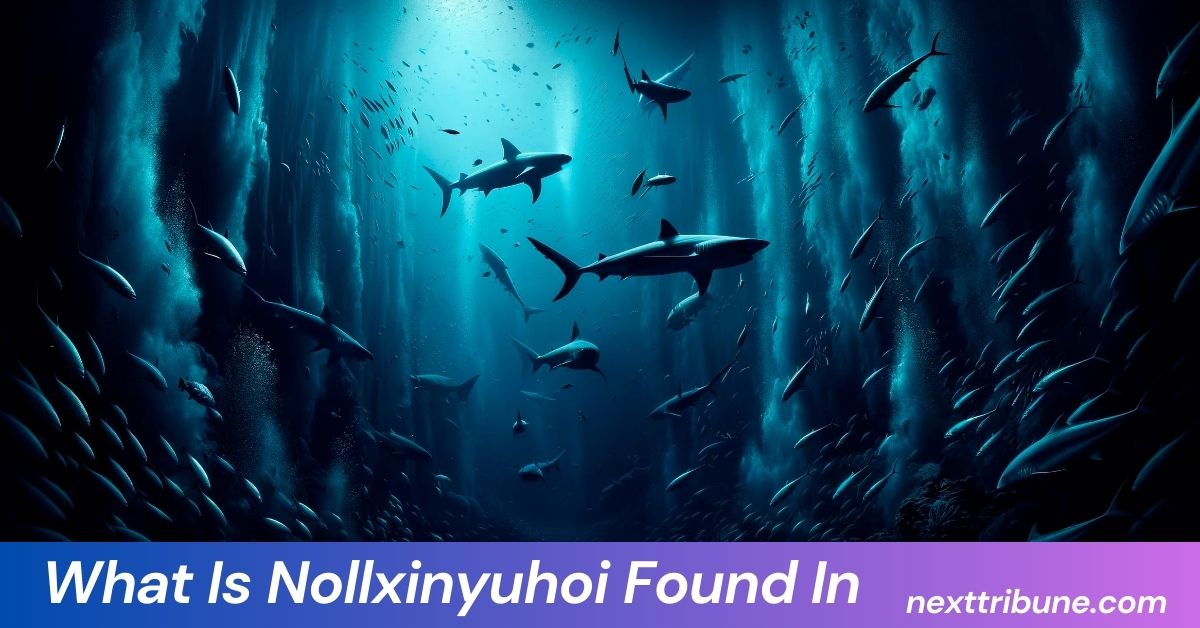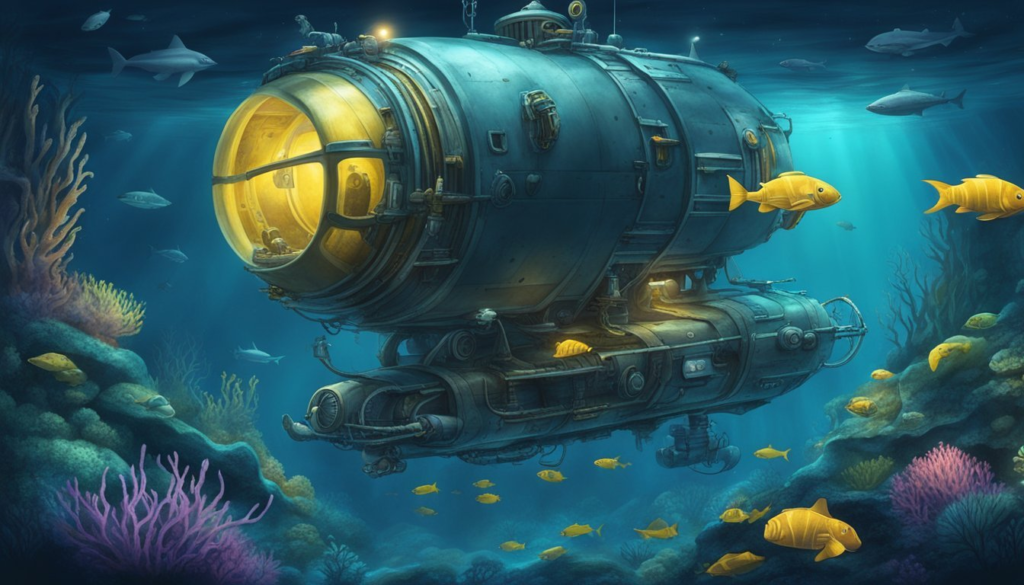
In the mysterious depths of the ocean, there are many secrets still unknown to humans. One such mystery that is slowly unfolding is a compound known as nollxinyuhoi. You might be wondering, what is nollxinyuhoi found in? This compound is not something you can find on land or in common marine environments. Instead, it is found in the deep-sea marine organisms that live in extreme environments such as volcanic seabeds and hydrothermal vents, especially in the Pacific Ocean.
This article will explore what nollxinyuhoi is, where it is found, how it works, and why it is important. We will also look at how it might be used in the future, and answer some frequently asked questions.
What is Nollxinyuhoi?
Nollxinyuhoi is a newly discovered compound that has been detected in organisms living under the sea, in very hostile and high-pressure environments. These organisms are able to survive and thrive in places where most life forms would not survive, such as hydrothermal vents on the ocean floor. These vents release very hot and mineral-rich water that creates a unique ecosystem.
Scientists believe that nollxinyuhoi plays a role in helping these organisms adapt and survive in such extreme conditions. It may support biological functions like energy production, cellular protection, or temperature regulation.

What is Nollxinyuhoi Found In?
The question “what is nollxinyuhoi found in” has a fascinating answer. It is found in deep-sea marine organisms that inhabit some of the harshest environments on Earth. These include:
- Tube Worms: These creatures live in hydrothermal vents and are known to have unique symbiotic bacteria in their bodies. Nollxinyuhoi has been isolated from these bacteria.
- Giant Clams: Some species of giant clams near volcanic vents show traces of this compound in their tissues.
- Thermophilic Bacteria: These bacteria thrive in hot temperatures and play a critical role in the deep-sea ecosystem. Many of these microbes produce or carry nollxinyuhoi.
- Deep-sea Fishes and Crustaceans: These animals may not produce it directly but accumulate it through their diet of organisms that do.
How Was Nollxinyuhoi Discovered?
The discovery of nollxinyuhoi happened during deep-sea expeditions using submersibles and robotic probes. These explorations focused on the Pacific Ocean’s volcanic seabeds, especially around areas such as the Mariana Trench and East Pacific Rise.
Also Read: Kosedosjahize: The Future of Automation, Innovation, and Efficiency Explained
By collecting samples from deep-sea vents and analyzing the chemical makeup of organisms found there, researchers identified a unique and previously unknown substance—nollxinyuhoi. It stood out due to its stability at high pressures and temperatures, and its unusual molecular structure.
Why is Nollxinyuhoi Important?
Nollxinyuhoi is important for several reasons:
- Survival Mechanism: It might be a key to understanding how life can exist in extreme environments.
- Medical Research: Some studies suggest it may have antimicrobial or anticancer properties.
- Biotechnology: Its stability and special properties might make it useful in industries such as pharmaceuticals, materials science, or even space travel.
- Environmental Studies: It helps scientists understand the biodiversity and biochemical adaptations in deep-sea ecosystems.
Scientific Properties of Nollxinyuhoi
While the complete chemical structure of nollxinyuhoi is still being studied, here’s what researchers know so far:
- Molecular Stability: It remains stable under high temperatures and pressures.
- Bioactivity: It interacts with cell membranes and may assist in regulating ion flow.
- Resilience: It resists breakdown from radiation, acidic environments, and even some toxic chemicals.
These traits suggest it may help marine life perform essential functions such as protein folding, enzyme activity, and stress response.
Also Read: Loxidpovsimhu: A New Era of Innovation and Possibilities
The Role of Nollxinyuhoi in Deep-Sea Life
Organisms in hydrothermal vents face:
- Extreme heat (up to 400°C)
- High pressure
- Toxic chemicals (like hydrogen sulfide)
- Complete darkness
Nollxinyuhoi seems to help these organisms by:
- Protecting proteins from damage
- Aiding in energy conversion using minerals from the vents
- Enhancing membrane strength and flexibility
- Reducing oxidative stress
This means it is likely essential to survival in such environments.
Potential Human Applications of Nollxinyuhoi
Scientists are excited about how this compound could be used on land:
In Medicine
- As a new antibiotic to fight resistant bacteria
- For cancer research, possibly as a tumor growth inhibitor
- To improve organ preservation for transplants
In Industry
- In bioengineered materials that can withstand extreme heat
- For making cosmetics that protect against environmental damage
- In food preservation due to its antioxidant effects
In Environmental Science
- To help clean up toxic spills, by harnessing its resistance to poisons
- As a bioindicator to study ocean health
How is Nollxinyuhoi Extracted?
Extracting nollxinyuhoi is challenging due to:
- Depth of over 3000 meters
- Need for specialized submersibles and robots
- Difficulty in keeping organisms alive after surfacing
Instead of harvesting it directly, scientists are trying to synthesize it in labs or engineer microbes to produce it.
Challenges in Research
The study of nollxinyuhoi faces obstacles:
- High cost of deep-sea research
- Limited samples and rare organisms
- Unknown side effects on humans
- Environmental concerns about disturbing delicate ecosystems
Despite these issues, the potential rewards are pushing research forward.
Also Read: Fosedosjahize: A Breakthrough in Cell Growth and Repair
Future of Nollxinyuhoi
Researchers are looking into:
- Genetic analysis to find the genes that produce it
- Synthesizing safer and more stable forms
- Testing its use in extreme environments like space stations
It may also help in climate change adaptation, as more areas of the planet become less hospitable.
Unique Insights and Analysis
While many sources only describe nollxinyuhoi’s location and chemical features, here’s a deeper look:
- Nollxinyuhoi could be an evolutionary biochemical armor, a substance so effective that it became part of multiple deep-sea species independently.
- Its cross-species presence suggests a shared ecosystem-based advantage rather than species-specific benefits.
- It might be a primitive molecule, formed in early Earth conditions, giving clues to how life started.
- If artificial environments can use nollxinyuhoi-like compounds, space colonization or deep-earth mining could become safer.
Also Read: Jigemotimate: Everything You Need to Know
FAQs About What is Nollxinyuhoi Found In
What is nollxinyuhoi found in?
Nollxinyuhoi is found in deep-sea marine organisms such as tube worms, thermophilic bacteria, giant clams, and deep-sea fishes that live around volcanic seabeds and hydrothermal vents.
Is nollxinyuhoi dangerous to humans?
There is no evidence that it is harmful to humans. In fact, it might be helpful for medicine and industry.
Can nollxinyuhoi be made in a lab?
Scientists are working on synthetic versions or engineering microbes to produce it.
Why is it only found in deep-sea organisms?
Because it helps them survive in extreme conditions like high pressure, heat, and toxic chemicals.
What is its future use?
It may be used in medicine, environmental cleanup, space exploration, and creating new materials.
Is there any environmental risk in extracting it?
Yes, taking organisms from their habitats can harm delicate ecosystems. That’s why lab production is preferred.
Conclusion
Understanding what is nollxinyuhoi found in is more than just a scientific question. It opens a window into the resilience of life, the wonders of deep-sea biology, and future possibilities for medicine, technology, and beyond.
As we continue to study this unique compound, we uncover more about our world—and perhaps even about life on other planets. Nollxinyuhoi might be one of nature’s hidden gems, waiting to transform our understanding of life and survival in extreme conditions.



